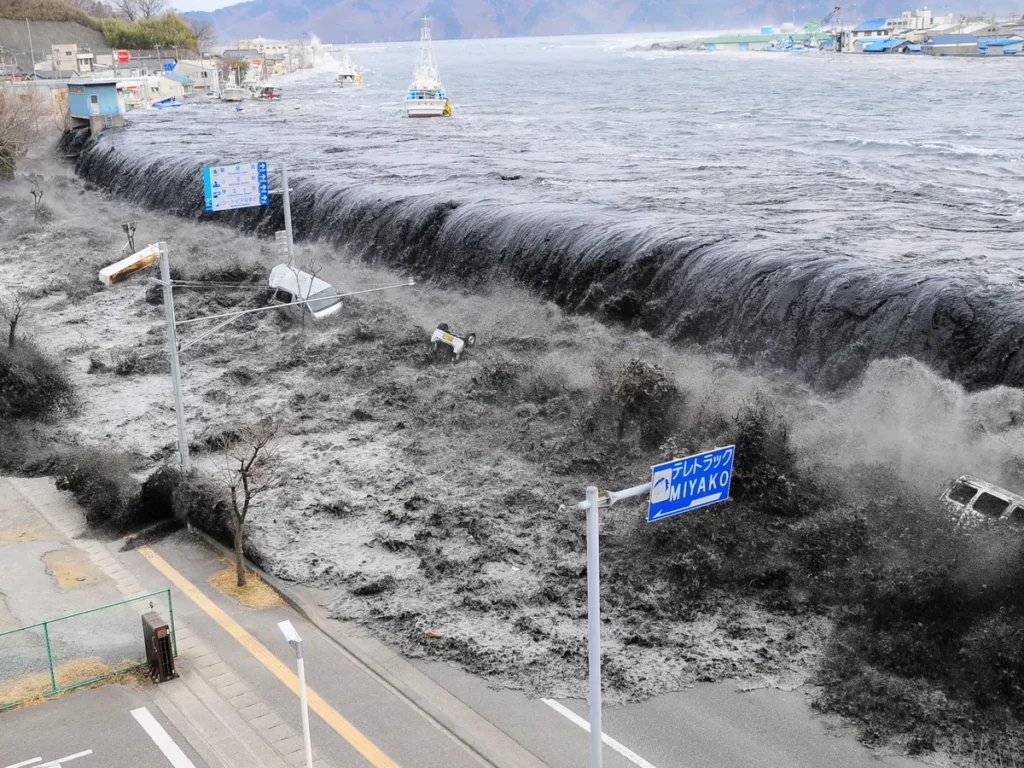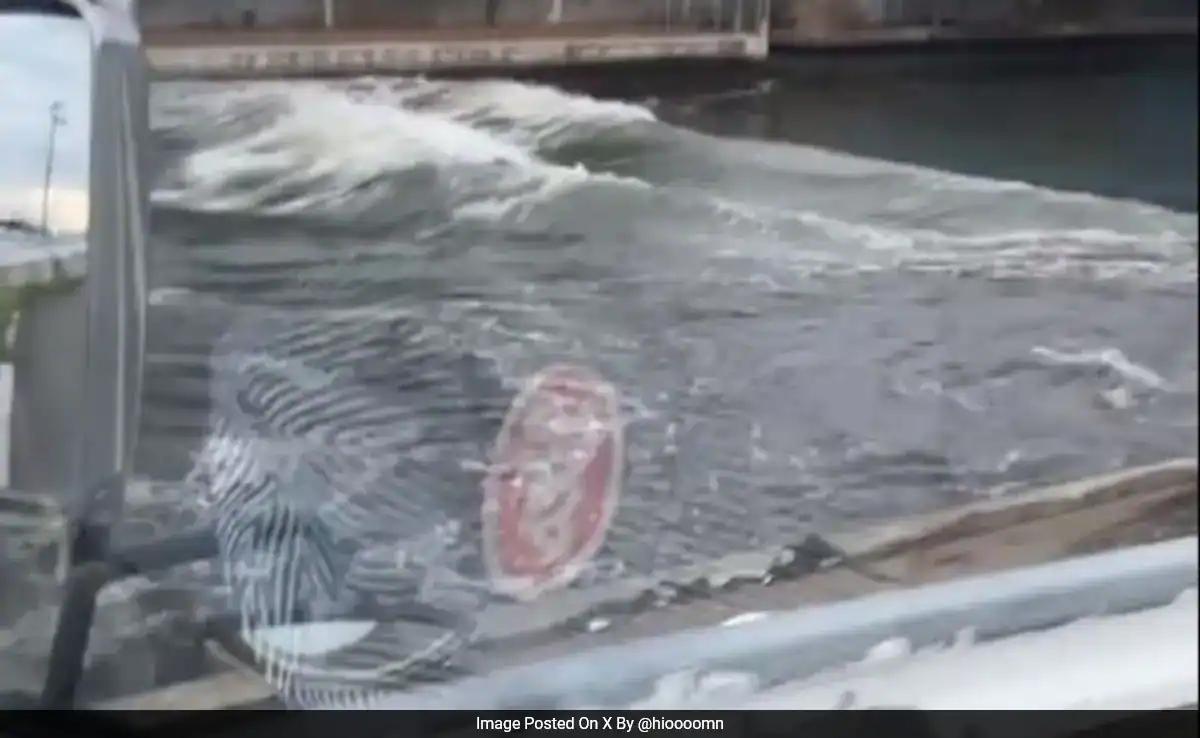Introduction:
The tranquility of a typical day in Toyama City, located in the Toyama Prefecture of Japan, was abruptly shattered by a powerful 7.5 magnitude earthquake. This seismic event, originating in the Noto region of Ishikawa Prefecture at around 4:10 pm local time, set off a series of tremors that not only rattled the ground but also triggered ominous first tsunami to hit Japan City warnings along the coast. The unfolding crisis prompted urgent evacuation orders as authorities braced themselves for the potential onslaught of hazardous tsunami waves.
津波、初めて見た
こわ
(ここは垂直避難済み) pic.twitter.com/t5vxuKjdRb— 打岩_ムテキムキムキの人 (@naec0) January 1, 2024
The Unprecedented Events:
Videos circulating on social media provided a chilling glimpse of the unfolding disaster, capturing the first waves of the tsunami crashing into Toyama City. While the authenticity of these videos could not be independently verified, the gravity of the situation became evident as reports streamed in. The Japan Meteorological Agency confirmed waves reaching a height of 1.2 meters at Wajima port in Ishikawa Prefecture, underscoring the immediate threat posed by the disaster.
The US Geological Survey (USGS) reported a rapid succession of earthquakes in the Noto region, beginning with a 5.7 magnitude tremor at 4:06 pm. This seismic activity culminated in a staggering 7.6-magnitude quake at 4:10 pm, marking the epicenter of the unfolding crisis. The ground continued to shake with subsequent quakes – a 6.1 magnitude tremor at 4:18 pm, a 4.5 magnitude quake at 4:23 pm, a 4.6 magnitude quake at 4:29 pm, and a 4.8 magnitude quake at 4:32 pm. A subsequent 6.2 magnitude earthquake further intensified the already dire situation, according to the US Geological Survey.

Tsunami Waves Hit Japan:
As the earth convulsed, Japan found itself facing the grim reality of a tsunami. Reports on Monday confirmed that tsunami waves, spawned by the 7.4 magnitude earthquake, had reached Wajima city in Ishikawa Prefecture. The Japan Meteorological Agency (JMA) verified a tsunami of 1.2 meters in Wajima, while the city of Noto braced for a much larger wave of five meters, as reported by AFP.
This marked a critical moment for Japan, as it was the first major tsunami to hit Japan City warning issued since the devastating events of March 11, 2011. The 2011 earthquake and tsunami, a colossal disaster, claimed nearly 20,000 lives, devastated towns, and triggered nuclear meltdowns in Fukushima. The echoes of that tragedy reverberated as the nation faced yet another formidable challenge.
Immediate Impact and Evacuation Efforts:
In the wake of the earthquake and tsunami to hit Japan City warnings, residents faced a race against time to evacuate coastal areas. The urgency was palpable as authorities worked tirelessly to ensure the safety of the population. Power outages affected thousands of homes, disrupting normal life and intensifying the challenges faced by both residents and emergency responders.
The Japan Meteorological Agency swiftly issued tsunami warnings for coastal regions in Ishikawa, Niigata, and Toyama prefectures. These warnings were a stark reminder of the potential consequences of such natural disasters, urging residents to take immediate precautions and move to higher ground.
Revisiting Past Traumas:
The events unfolding in Toyama City and the Noto region rekindled memories of the catastrophic events of 2011. The scars of that fateful day lingered, and the resilience of the Japanese people was put to the test once again. The collective trauma of facing a formidable earthquake and the subsequent tsunami cast a shadow over the affected regions, but the spirit of solidarity and preparedness prevailed.
富山市 萩浦橋 津波到達中 pic.twitter.com/5TJkH4E1Mx
— 鈴木 一 (@hioooomn) January 1, 2024
Tsunami Preparedness and Resilience:
The tragic recurrence of tsunami warnings underscores the critical importance of ongoing efforts to enhance preparedness and resilience in vulnerable coastal regions. Japan, a nation acutely aware of its susceptibility to seismic activities. Has invested significantly in early warning systems. Infrastructure development. and public awareness campaigns.
Conclusion:
The first tsunami to hit Japan City in the wake of the recent earthquake serves as a stark reminder of the relentless power of nature. As the nation grapples with the immediate aftermath and initiates recovery efforts. The spirit of unity and preparedness remains a beacon of hope. Japan’s commitment to learning from past experiences and continuously improving its ability to respond to such crises exemplifies the resilience of a nation that has faced and overcome immense challenges. The journey towards recovery is undoubtedly daunting. But the strength of the human spirit. Coupled with strategic measures for disaster mitigation, will guide Japan towards rebuilding and healing once again.





